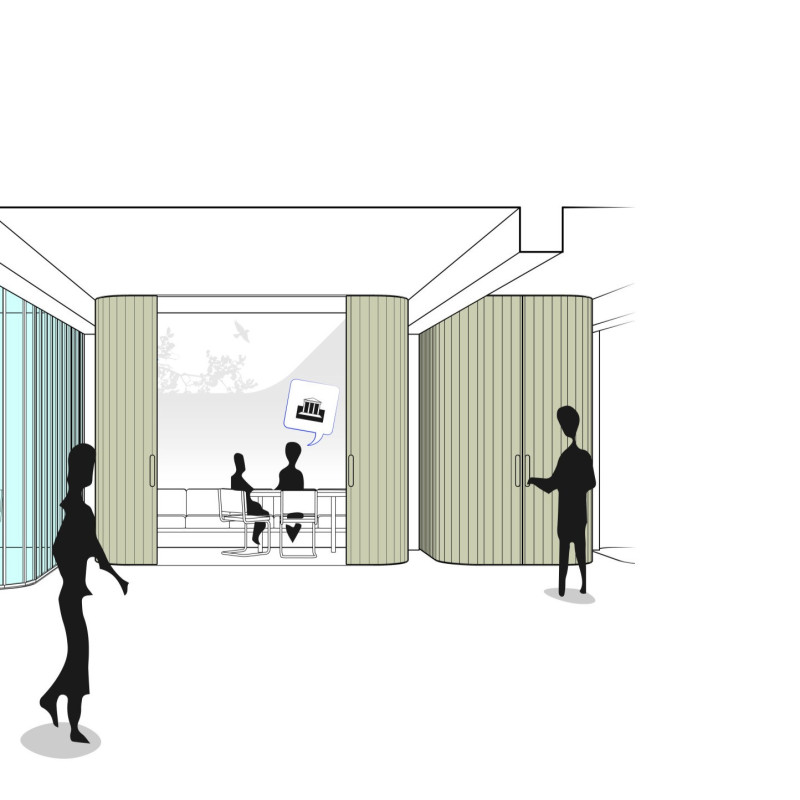5 key facts about this project
At the heart of the project is its multifunctional purpose, serving as a communal hub that encourages interaction among its users. The design integrates various spaces that accommodate different activities, from open areas for social gatherings to more intimate nooks for individual contemplation. This versatility is a crucial aspect, promoting a sense of community and enhancing the quality of life for those who inhabit or visit the space.
The architectural form is primarily defined by its contextual awareness, with elevations and proportions that harmonize with adjacent structures while still establishing a distinct identity. Large windows punctuate the façade, providing ample natural light and facilitating a seamless connection between indoor and outdoor environments. This not only enhances the livability of the spaces but also emphasizes the importance of natural elements within urban settings, encouraging occupants to engage with nature in their daily lives.
Materiality plays a significant role in the project’s expression. A careful selection of materials, including sustainably sourced wood, sturdy concrete, and energy-efficient glazing, informs both the aesthetic and functional aspects of the architecture. The use of warm wood tones contributes to an inviting atmosphere, while the concrete provides durability and a contemporary edge. Energy-efficient systems are incorporated throughout the design, showcasing a commitment to sustainable practices that address pressing environmental concerns. The combination of materials is executed in a manner that emphasizes texture and visual interest, ensuring an engaging experience as users navigate the space.
Unique design approaches manifest in various ways throughout the project. One notable feature is the incorporation of green roofs and landscaping, which serve to enhance biodiversity while improving the thermal performance of the building. This ecological design element reflects a growing trend within architecture to prioritize environmental responsibility without sacrificing aesthetic value. Moreover, the integration of smart technology within the structural design enables efficient energy management, further aligning the project with modern sustainability goals.
The layout of the interiors is carefully crafted to foster a sense of openness and fluidity, facilitating movement and interaction. Spaces are organized in a manner that minimizes barriers, encouraging occupants to explore the entire environment freely. Subtle design details, such as integrated lighting solutions and user-friendly finishes, contribute to an overall sense of comfort and functionality.
This architectural project serves as a testament to the ability of design to positively influence community dynamics and promote a holistic approach to living and working. By skillfully blending innovative design principles with practical functionality, the project stands out as a significant contribution to contemporary architecture. It invites further exploration, urging others to delve into the architectural plans, sections, and designs that reveal deeper insights into its thoughtful execution and conceptual underpinnings. For those intrigued by modern architectural ideas and their impact on community spaces, engaging with the comprehensive project presentation will offer valuable context and inspiration.


 Steven Campbell Worthington
Steven Campbell Worthington 






















